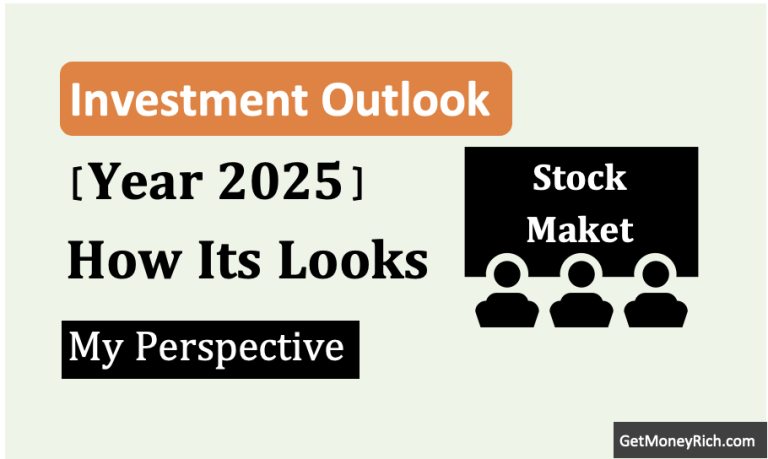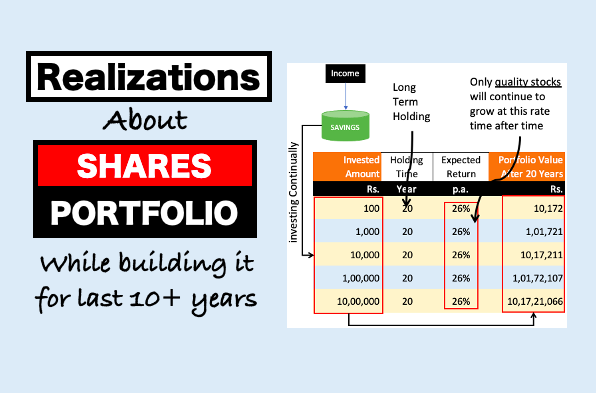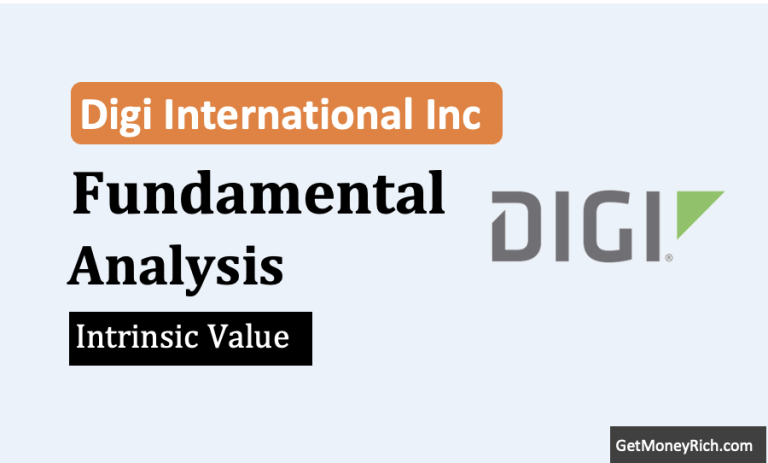As we step into 2024, the Indian stock market enters the new year with sets of opportunities and limitations. Our market is getting influenced by both domestic and global trends. A careful examination of recent developments reveals key insights that can guide investors in making informed decisions.
In this article, I will present my observations on a few starting trends that influenced our stock market in the first few weeks. These kinds of pieces can help us build a perspective on the market. It can help us build valuable investing strategies enhancing our chances of “good picks” in the months ahead.
Point #1: Market Overview
The first few days of 2024 mark a departure from the prolonged bullish momentum that characterized the preceding year 2023. Sensex and Nifty are currently navigating through a consolidation phase. It is a period where the market digests recent gains and establishes new trends.
Several factors have converged to influence this shift in market dynamics.
- Global Geopolitical Tensions: The world has witnessed an escalation of geopolitical tensions, particularly in regions like the Middle East. The conflicts in Gaza and increased hostilities involving Iran and Pakistan have injected uncertainty into the global landscape. Such geopolitical uncertainties have a cascading effect on financial markets. It leads to increased volatility as investors reevaluate risk appetites.
- Shifts in Monetary Policies: Central banks around the world are undergoing shifts in their monetary policies. The US Federal Reserve’s ability to pivot on interest rates has become a focal point. The December quarter saw data on the US CPI, at the backdrop of the above expectations, indicating that inflation remains a concern. Hence, there are chances that the Fed might hold off on interest rate cuts in the first quarter of 2024. Chances of high bond yields have contributed to market volatility.
- Sector-Specific Challenges: Various sectors are grappling with unique challenges that have implications for their performance. Sectors such as IT, which traditionally have been market leaders, face headwinds. There is a downgrade trend of sales expectations from major players. On the other hand, sectors like Realty, Telecom, Healthcare, Power, and Oil & Gas have exhibited strength.
Understanding the Broader Economic Context
Against this backdrop, it is for investors to broaden their perspective and comprehend the macroeconomic factors influencing market movements. We must assess the risks and rewards in portfolios. To do this we must build a holistic understanding of not only domestic but also global factors that influence the market.
We can closely monitor developments in geopolitics, and stay abreast of central bank policies. We can also conduct a nuanced analysis of sector-specific challenges to make well-informed investment decisions.
Point #2: Tech Stocks and Global Influences
The technology sector is currently navigating a challenging landscape marked by headwinds and downward revisions in sales expectations. Major players, like Apple, have faced setbacks, especially in crucial markets like China. The significance of the tech sector in influencing overall market trends cannot be overstated. Hence, we as investors should delve deeper into the specific challenges affecting this industry.
- Sales Expectations Downturn: One of the primary concerns contributing to the tech sector’s challenges is the notable downturn in sales expectations. This is particularly evident in the case of Apple. The Chinese market has witnessed a slowdown in demand, leading to subdued sales projections. This downturn could be attributed to a variety of factors, including economic conditions, regulatory changes, and evolving consumer preferences.
- Global Events Impact: Beyond internal industry dynamics, global events have added a layer of complexity to the challenges faced by the tech sector. The ongoing conflict in the Middle East and heightened geopolitical tensions, such as Russia’s aggressive stance, have cast a shadow on market sentiments. These events affect investor confidence and decision-making within the tech sector.
Key Takeaways for us:
Investors need to incorporate these insights into their investment strategies. Here are key takeaways to consider:
- Diversification Strategies: Acknowledging the challenges faced by the tech sector, investors may consider diversifying their portfolios across different industries and sectors. Spreading investments can help mitigate risks associated with sector-specific downturns.
- Monitoring Global Events: Investors should maintain a vigilant stance regarding global events, particularly those with the potential to impact the tech sector. Geopolitical developments, trade tensions, and conflicts can have ripple effects on the industry. They can influence stock prices and the overall market.
- Adapting to Sales Projections: As major players in the tech sector revise their sales expectations, investors should recalibrate their expectations. This might involve reassessing individual stock holdings, and considering shifts in market trends. These shifts can also present for us new investing opportunities.
The challenges faced by the tech sector tell us about the dynamic and volatile nature of the financial markets. The key is to keep observing the market as a whole also individual sectors and industries. Our keen observation will make us aware of a few new buying opportunities.
Point #3: What Market Indicators To Observe
Understanding the stock market involves looking beyond the surface. We must delve into key indicators that can reveal important insights into its health. One such indicator that even beginners can grasp is the number of stocks trading below the 20-day moving average. This simple metric can provide valuable information about the internal dynamics of the market and offer early signals of potential changes in trends.
1. What is the 20-Day Moving Average?
The 20-day moving average is a smoothed-out trend line that reflects the average closing prices of stocks over the past 20 trading days. It helps to filter out daily price fluctuations, offering a clearer picture of the overall trend.
2. Why is the Number of Stocks Below the 20-Day Moving Average Important?
By observing how many stocks are trading below this moving average, investors can gauge the market’s internal strength or weakness. If a significant number of stocks fall below this average, it may indicate a potential weakening of the market.
3. Insights into Market Dynamics
When a large portion of stocks is below the 20-day moving average, it suggests a broader trend of declining prices. This might be due to various factors, such as negative economic news, geopolitical events, or sector-specific challenges. Conversely, when a substantial number of stocks are above the moving average, it signifies a more positive and bullish market sentiment.
4. Early Signals of Trend Reversals
Divergences in the number of stocks below the 20-day moving average can serve as early signals of potential trend reversals. For beginners, this means paying attention to changes in this indicator, especially if it deviates from the overall market trend. A sudden increase in stocks trading below the moving average may signal a shift from a bullish to a bearish market or vice versa.
5. How We Can Use This Information
For people entering the stock market, understanding these indicators provides a foundation for making informed decisions. If a large number of stocks are below the 20-day moving average, it might be a cautious time to consider adjusting portfolios, perhaps by diversifying holdings or exploring defensive stocks less influenced by market fluctuations.
Point #4: Foreign Institutional Investors (FIIs) and Open Interest
Foreign Institutional Investors (FIIs) play a crucial role in the Indian stock market. Recently, they’ve been cautious. To understand their impact, focus on the futures market, where they actively participate. Look at the Futures Open Interest (OI) ratio, a measure of outstanding contracts. When normalized against the Sensex value, it provides insights.
Insights for Beginners
- What is Open Interest (OI): OI represents the total number of outstanding futures contracts. It gives a sense of market participation.
- FIIs’ Cautious Stance: FIIs, being significant players, influence market trends. A cautious approach from them suggests a careful market sentiment.
- Futures OI Ratio: Normalizing OI against the Sensex helps gauge buying interest. A low ratio at higher Sensex levels indicates a potential bearish trend, meaning less interest in buying at those levels.
- Why it Matters: For beginners, understanding FIIs’ behavior guides decision-making. A lack of buying interest at higher levels might influence market directions, prompting investors to assess their positions accordingly.
- Potential Actions: If the Futures OI ratio shows a bearish divergence, it could be a signal to approach the market more cautiously. Consider adjusting portfolios, possibly reducing exposure to higher-risk assets, and staying vigilant for market changes.
Keeping an eye on FIIs and the Futures OI ratio, especially in relation to the Sensex, equips beginners with valuable insights. It aids in making more informed decisions, allowing them to navigate the market with a heightened awareness of potential trends and shifts.
Point #5: Earnings Season and Sector Performance
The ongoing Q3 earnings season introduces an element of uncertainty in the stock market. How different sectors perform during this season can significantly impact investment decisions. Here’s a simplified breakdown:
Insights for Beginners
- Understanding Earnings Season: Companies release their financial reports during earnings seasons. It’s a crucial time for investors to assess how well businesses are doing.
- Sectoral Variations: Not all sectors move in the same direction. Some sectors show strength, while others face challenges during earnings season.
- Strong Sectors: Realty, Telecom, Healthcare, Power, and Oil & Gas are currently exhibiting strength. This means companies in these sectors are performing well or meeting market expectations.
- Challenged Sectors: On the flip side, sectors like Automobiles, IT, and Metals are facing challenges. Companies in these sectors may be experiencing difficulties or not meeting market expectations.
Why it Matters
- Portfolio Optimization: For beginners, this information helps optimize portfolios. If sectors like Realty or Healthcare are doing well, it might be wise to consider or hold investments in companies from these sectors.
- Risk Management: Knowing which sectors face challenges allows investors to manage risks. If a significant part of your portfolio is in a struggling sector, you might reconsider your investment strategy.
- Long-Term Planning: Understanding sectoral nuances is vital for long-term planning. It helps investors align their portfolios with sectors showing consistent strength.
Potential Actions
- Diversification: Consider diversifying your portfolio across sectors. This way, even if one sector underperforms, others may offset potential losses.
- Research: Dig deeper into the reasons behind sectoral performances. It could be due to economic trends, policy changes, or industry-specific factors.
Earnings season brings both opportunities and challenges. By paying attention to sectoral performances, beginners can make more informed decisions, ensuring their investments align with the current dynamics of the market.
Point #6: The Integrated Healthcare and Insurance Model
A recent regulatory approval for Dr. Devi Shetty’s Narayana Hrudayalaya marks a significant development in the healthcare and insurance landscape. It can potentially creat3 exciting opportunities for investors. Here’s a look at this innovative approach:
Understanding the Integrated Model
- What is it? The integrated healthcare and insurance model means combining healthcare services with insurance coverage in one package.
Key Points for Beginners
- Managed Healthcare Focus: This model emphasizes managed healthcare, which involves organized and efficient delivery of medical services. For beginners, think of it as a more streamlined and well-managed health system.
- Regulatory Approval: The fact that regulatory bodies have given their approval is crucial. It means the government sees potential benefits in this approach, which could translate into positive outcomes for investors.
Potential Impacts
- Reshaping Healthcare: The integrated model has the potential to reshape how healthcare and insurance work together. This could lead to better and more accessible healthcare services for the public.
- Investment Opportunities: For investors, this opens up new avenues. Companies adopting this model, like Narayana Hrudayalaya, might see increased demand and growth, creating potential investment opportunities.
Why Investors Should Pay Attention
- Innovation in the Sector: Any innovative approach in sectors like healthcare and insurance can be a game-changer. For investors, being aware of such innovations is crucial for spotting trends early.
- Long-Term Growth: If the integrated model proves successful, it could lead to sustained growth for the companies involved. Investors looking for long-term opportunities should keep a close eye on how this unfolds.
Possible Actions for Us
- Research and Due Diligence: Beginners should dive into the details. Understand how this integrated model works, its potential benefits, and any challenges it might face.
- Watch for Performance: Keep an eye on how companies implementing this model perform in the stock market. Positive performance could be an indicator of the model’s success.
The approval of the integrated healthcare and insurance model signifies a shift in how these sectors operate.
Point #7: Mutual Fund Milestone and Market Inflows
Reaching Rs 50.8 lakh crore in Assets Under Management (AUM), the mutual fund industry has hit a significant milestone. It is showcasing enduring investor trust in the mutual funds as a reliable investment vehicle. Let’s break down why this matters for us:
Key Takeaways
- AUM Growth: AUM reaching Rs 50.8 lakh crore indicates the total value of assets managed by mutual funds. This growth is a positive sign for the market, reflecting investors’ confidence in these funds.
- Investor Trust: The milestone signifies that investors trust mutual funds with their money. For beginners, this is crucial as it shows that many people consider mutual funds a reliable investment option.
Why SIPs Matter
- Systematic Investment Plans (SIPs): Despite uncertainties like geopolitical tensions, the rise in SIP registrations suggests a growing interest among investors. SIPs involve regularly investing a fixed amount, providing a disciplined approach to investing.
- Equity Market Confidence: The increased SIPs indicate that investors remain confident in the equity markets. Even in challenging times, people are willing to invest systematically, which can be seen as a positive outlook.
Words of Caution
- Vigilance on Valuations: Analysts are advising caution, particularly regarding valuations in mid-cap stocks. For beginners, this means being aware that some stocks might be priced higher than their potential, and careful consideration is needed.
- Cautious Optimism: While the mutual fund industry’s growth is positive, adopting a cautiously optimistic approach is wise. Understanding that markets can have fluctuations and being vigilant about valuations is part of a prudent investment strategy.
What Beginners Can Do
- Diversification: Consider diversifying investments across different types of funds to spread risk.
- Stay Informed: Keep an eye on market updates and any cautionary advice from analysts. Staying informed is particularly critical for equity investors.
Point #8: Corporate Earnings Outlook
Understanding the corporate earnings outlook is like peering into the crystal ball of the stock market. Let’s break down this complex point:
Decoding Corporate Earnings Outlook
- October-December 2023 Quarter: This period signifies the last quarter of the calendar year. Analysts are predicting a subdued performance in terms of profits and revenues for companies during this time.
- Nifty 50 Companies: The Nifty 50 index represents 50 major stocks on the National Stock Exchange of India. Lower growth forecasts suggest that these significant companies might face challenges in earnings.
Sector Variability
- Resilient Sectors: Some sectors like capital goods and infrastructure are expected to show resilience, meaning they might fare relatively well in terms of earnings.
- Challenged Sectors: On the flip side, sectors like Banking, Financial Services, and Insurance (BFSI), Information Technology (IT), Fast-Moving Consumer Goods (FMCG), and Oil and Gas are facing headwinds. Headwinds imply they might encounter difficulties or obstacles impacting their performance.
What Beginners Should Consider
- Adjusting Portfolios: As an investor, it’s crucial to adapt. If certain sectors are expected to face challenges, consider adjusting your portfolio. This might involve reassessing your investments in these sectors or exploring opportunities in more resilient ones.
- Diversification: Don’t put all your eggs in one basket. Diversifying your investments across different sectors helps spread risk. If one sector underperforms, others may provide a balancing effect.
Words of Wisdom
- Stay Informed: Regularly check updates on sector-specific news and forecasts. Staying informed helps in making proactive decisions.
- Long-Term Perspective: Don’t let short-term predictions dictate all your moves. Investing is often a long-term game, and sectoral performances can vary over time.
Navigating the corporate earnings outlook involves understanding which sectors might face challenges and which ones could weather the storm.
Point #9: Macro Trends and Budget Expectations
Embarking on the journey of understanding macro trends and Budget expectations may sound complex, but fear not, I’ll try to simplify it here:
Macro Trends and Their Impact
- Approaching the Budget and Earnings Season: Imagine the stock market as a ship, and the Budget and earnings season as turbulent waters. As we sail toward these events, it’s anticipated that market waves, known as volatility, will rise.
- National Income Growth: The national income growth estimate for 2023-24 reveals a modest 4.4 percent increase in private consumption. This essentially means people spending on goods and services. A slow growth rate might indicate challenges in the broader economic landscape.
Key Actions for Us
- Watch for Market Waves: Picture market volatility as waves in the stock market sea. As we approach the Budget and earnings season, these waves might become more pronounced. For beginners, it’s crucial to be aware of potential ups and downs.
- Budget Announcements Impact: The Budget, guides the ship of the economy. Investors, especially beginners, should keep a close eye on the Budget announcements. Government policies unveiled during this time can significantly impact various sectors, influencing stock prices.
The Budget
- Stay Informed: Read and stay updated on Budget expectations. Financial news and analyses can provide insights into what policies might be announced and how they could affect different sectors.
- Adapt Your Course: Based on Budget announcements, consider adjusting your investment strategy. Some sectors may benefit from government initiatives, while others might face challenges.
Point #10: HDFC Bank and the Banking Sector
Understanding HDFC Bank’s recent challenges and their implications on the banking sector can be a crucial lesson for beginners in the stock market:
Decoding HDFC Bank’s Performance
- HDFC Bank’s Rough Waters: Think of HDFC Bank as a flagship in the banking sector. Its recent performance signals challenges. For beginners, this highlights the need to comprehend the broader banking landscape.
- Factors Impacting Banks: Non-performing assets (NPAs) are bad for banks. Likewise, the interest rates give directions to the banks. These factors, along with the economic environment, influence how smoothly bank stocks will perform in times to come. HDFC Bank’s struggles echo broader sectoral concerns.
Guidance for Beginner Investors
- Evaluate Banking Landscape: The banking sector is influenced by both government and non-government actions. To understand the banking business, we need to evaluate factors like NPAs which are loans not being repaid. We must also observe the provisions and the interest rates as they affect the bank’s profitability.
- Sectoral Health Matters: The banking sector powers the broader market. Beginner investors should recognize that the health of banks often mirrors the overall market health. Informed banking investments can significantly impact one’s portfolio.
Preparing for Banking Investments
- Learn About NPAs: Non-performing assets (NPAs) are loans where borrowers aren’t repaying as agreed. Beginners should grasp the impact of NPAs on a bank’s stability and profitability.
- Interest Rates Influence: We must understand how fluctuations in interest rates can affect a bank’s lending and profitability. When rates rise, borrowing costs increase, potentially slowing lending. Conversely, lower rates stimulate borrowing, boosting lending but squeezing profit margins. Good banks strategically navigate these rate dynamics to maintain profitability and sustain lending activities.
Conclusion
In this ever-evolving stock market landscape, staying informed is the key to making sound investment decisions. By synthesizing insights from recent news about the market, investors can develop a comprehensive understanding of market trends, risks, and opportunities.






